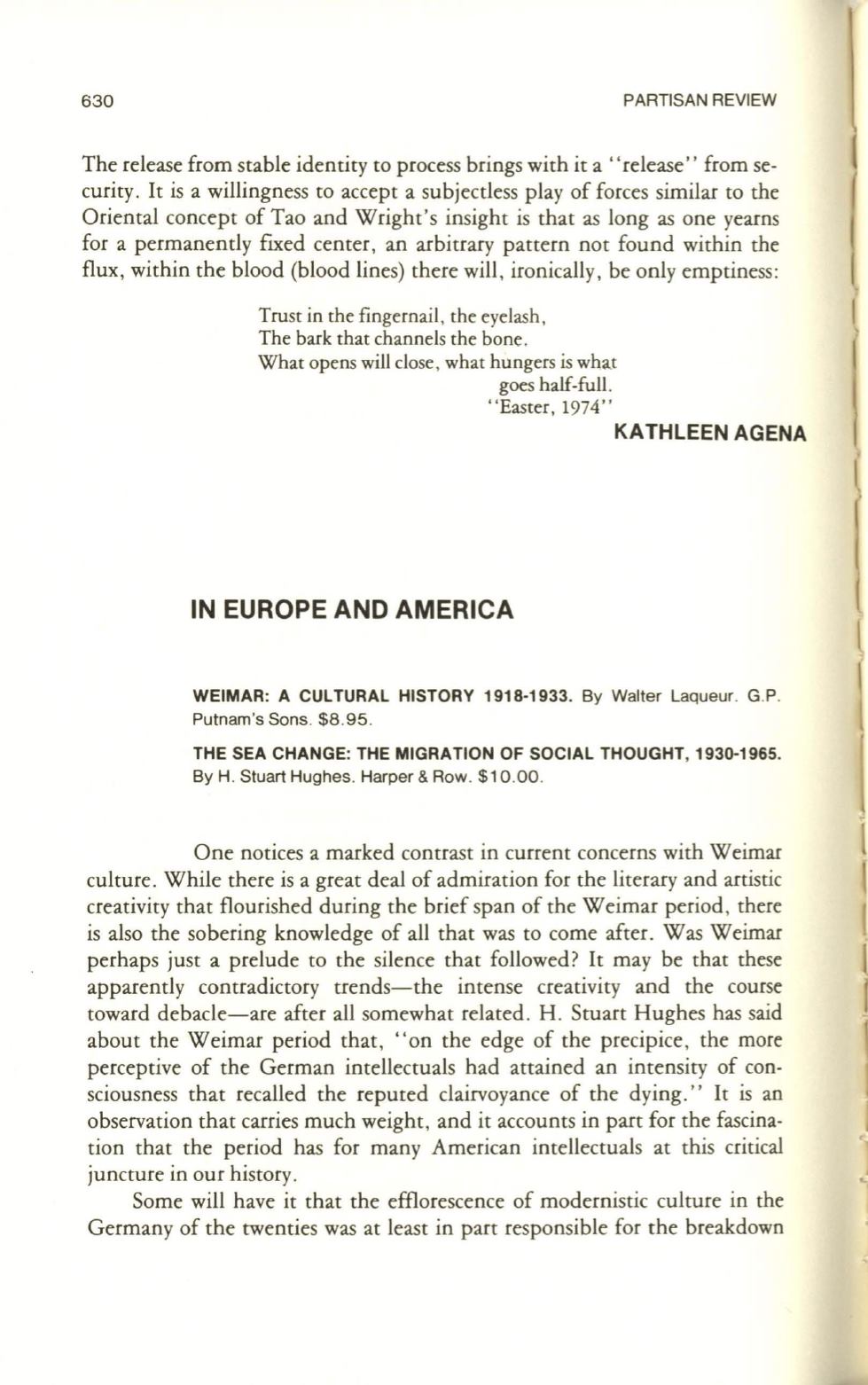
630
PARTISAN REVIEW
The release from stable identity to process brings with it a " release" from se–
curity.
It
is a willingness to accept a subjectless play of forces similar to the
Oriental concept of Tao and Wright'S insight is that as long as one yearns
for a permanently fIxed center, an arbitrary pattern not found within the
flux, within the blood (blood lines) there will , ironically, be only emptiness:
Trust in the fingernail, the eyelash ,
The bark that channels the bone.
What opens will close, what hungers is wha.t
goes half-full.
" Easter, 1974"
KATHLEEN AGENA
IN EUROPE AND AMERICA
WEIMAR: A CULTURAL HISTORY
1918-1933. By
Walter Laqueur. G.P.
Putnam's Sons. $8.95 .
THE SEA CHANGE: THE MIGRATION OF SOCIAL THOUGHT,
1930-1965.
By
H. Stuart Hughes. Harper & Row.
$10.00.
One notices a marked contrast in current concerns with Weimar
culture. While there is a great deal of admiration for the literary and artistic
creativity that flourished during the brief span of the Weimar period, there
is also the sobering knowledge of all that was to come after. Was Weimar
perhaps just a prelude to the silence that followed? It may be that these
apparently contradictory trends-the intense creativity and the course
toward debacle-are after all somewhat related . H . Stuart Hughes has said
about the Weimar period that , "on the edge of the precipice , the more
perceptive of the German intellectuals had attained an intensity of con–
sciousness that recalled the reputed clairvoyance of the dying."
It
is an
observation that carries much weight, and it accounts in part for the fascina–
tion that the period has for many American intellectuals at this critical
juncture in our history.
Some will have it that the efflorescence of modernistic culture in the
Germany of the twenties was at least in part responsible for the breakdown


